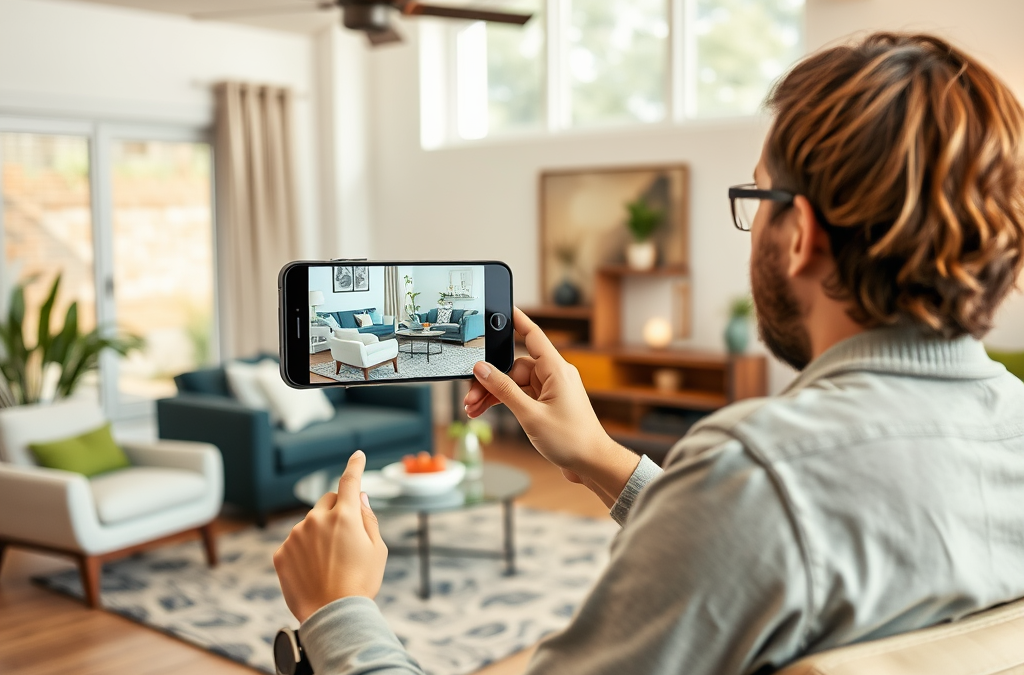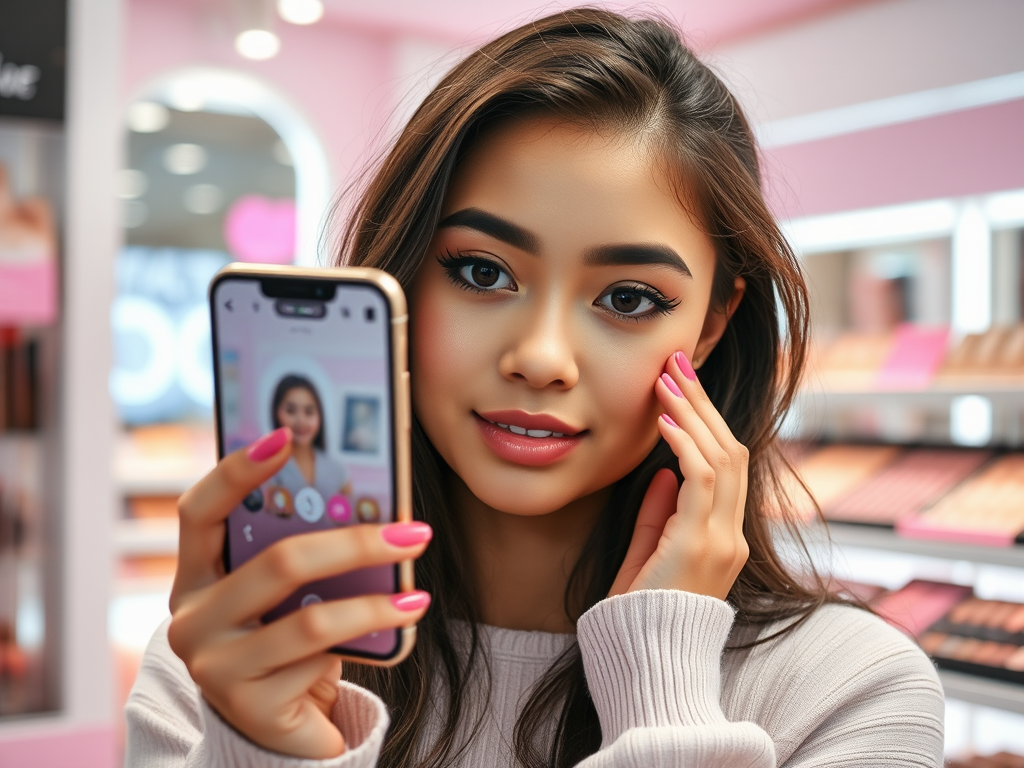
The Role of Augmented Reality in Marketing
In today’s fast-paced digital landscape, brands are constantly seeking innovative ways to engage with their audiences. Augmented reality (AR) is emerging as one of the most powerful tools in this endeavor. By seamlessly blending digital elements with the real world, AR creates immersive experiences that appeal to consumers’ senses and emotions. Rather than simply offering static content, AR enables interactivity and personalization, making brand interactions more captivating. This technology is reshaping marketing strategies across various industries, pushing the boundaries of creativity and consumer engagement. As businesses harness the power of AR, the effectiveness of their marketing efforts is being transformed.
How Augmented Reality Enhances Consumer Experience

One of the most significant advantages of incorporating augmented reality into marketing is its ability to elevate the consumer experience. Brands can provide interactive content that resonates with their target audiences, fostering deeper connections. Consumers no longer wish to be passive recipients of information; they crave experiences that are engaging and relevant. AR facilitates this by allowing brands to create dynamic environments that merge digital content with everyday life. Thus, AR doesn’t just enhance the shopping journey; it transforms it into an interactive experience that captivates consumers. From virtual try-ons to interactive tutorials, AR amplifies the consumer journey in ways traditional media cannot.
One standout application of AR in marketing is interactive product visualization. This feature enables consumers to see how products will fit into their spaces before making a purchase. Industries such as furniture, home decor, and fashion have particularly benefited from this innovation. By using AR, brands can reduce uncertainty, making the shopping experience more satisfying. When consumers can visualize products in their own environments, they are more likely to proceed with their purchases. This added confidence leads to not only fewer returns but also an increase in overall customer satisfaction.
The Benefits of Using Augmented Reality in Marketing Campaigns

When integrated effectively, AR can bring numerous benefits that help brands stand out in a crowded marketplace. These advantages include improved consumer engagement, enhanced brand loyalty, and increased overall sales. An understanding of how these benefits manifest can help marketers refine their strategies. The following is a list of the core benefits of employing AR in marketing:
- Increased Engagement: AR experiences often draw users in, allowing brands to communicate their messages more interactively.
- Heightened Retention Rates: Offering memorable experiences through AR fosters emotional connections with consumers.
- Higher Conversion Rates: Interactive tools help consumers make informed decisions, effectively nudging them toward a purchase.
In addition to these benefits, brands have observed remarkable success in running AR marketing campaigns. These campaigns not only engage consumers but also increase brand visibility. A well-executed AR campaign can create a buzz on social media, leading to viral exposure. As a result, many businesses see a direct correlation between AR strategies and increased sales figures. This trend underscores the significance of staying ahead of industry curves while leveraging AR’s capabilities.
| Brand | AR Application | Outcome |
|---|---|---|
| IKEA | Furniture visualization app | Higher customer satisfaction and reduced return rates |
| Sephora | Virtual try-on for makeup | Increased user engagement and brand loyalty |
| Nike | Shoe customization through AR | Improved customer interaction and higher sales |
Successful Examples of Augmented Reality in Marketing
Examining case studies of successful AR implementations can provide valuable insights into effective marketing strategies. Notable examples include IKEA and Pokémon GO, each showcasing the versatility and effectiveness of AR in enhancing consumer experiences. These case studies illustrate that innovative uses of AR can capture interest and drive engagement.
IKEA Place
IKEA has skillfully employed AR through its IKEA Place app, allowing users to visualize how furniture will fit in their homes before making a purchase. This straightforward approach has led to tangible results, including higher customer satisfaction rates and lower return percentages. By bridging the gap between desire and reality, IKEA’s AR strategy not only streamlines the consumer’s decision-making journey but also reduces the friction that often accompanies online shopping.
Pokémon GO and its Marketing Success
The world-famous mobile game Pokémon GO revolutionized how businesses perceive location-based marketing. Through AR, it encouraged players to explore their surroundings to catch virtual creatures, leading to increased foot traffic for local businesses. This innovative approach has fostered partnerships between Pokémon GO and various brand retailers, resulting in a win-win situation that benefits both parties. Such creative strategies highlight the potential of AR to not only engage users but also generate real-world value for brands.
Challenges of Implementing Augmented Reality
Despite its numerous advantages, integrating augmented reality into marketing strategies can present challenges. Businesses must be aware of the complexities involved in developing AR content. For many, technical limitations can pose significant barriers. Not all organizations have the budget or resources necessary to invest in advanced technology or design flair needed to create compelling AR experiences.
In addition, user adoption remains a critical factor. While AR has gained traction among tech-savvy consumers, many individuals may not be familiar enough with the technology to fully engage with it. This lack of familiarity can dampen the effectiveness of marketing campaigns that incorporate AR. It’s essential for brands to consider their target audience’s comfort level with AR to ensure campaigns resonate effectively.
Conclusion
The integration of augmented reality into marketing strategies presents brands with unique opportunities to amplify consumer engagement and elevate brand experiences. AR’s potential to transform traditional marketing methodologies is evident, highlighting the importance of leveraging innovative tools to stay ahead of the competition. Understanding AR’s many benefits, as well as its challenges, equips companies to navigate this evolving landscape. Ultimately, by adopting AR, businesses can create lasting impressions on their audiences and foster deeper connections that translate into increased loyalty and sales. The future of marketing lies in brands embracing technology, making AR an indispensable tool in the quest for consumer engagement.
Frequently Asked Questions
- What is augmented reality in marketing? Augmented reality in marketing involves using digital overlays to enhance consumer experiences, offering interactive product visualization and engaging content.
- How can AR improve consumer engagement? AR provides immersive experiences that capture attention and encourage interaction, leading to increased engagement and brand loyalty.
- What are some examples of AR in marketing? Notable examples include IKEA’s AR app for furniture visualization and Pokémon GO’s partnership strategies with local businesses.
- What challenges do brands face with AR? Technical limitations and user adoption are significant challenges, as not all businesses have the resources to develop AR content, and some consumers may resist using it.
- Is AR marketing suitable for all business types? While AR can benefit various industries, its effectiveness may vary based on the target audience and the nature of the products or services offered.